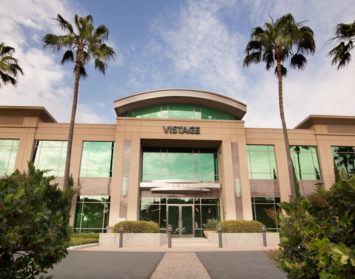
During the past few years of tough economic conditions, we’ve all seen the growing presence of “zombie buildings” – those mostly vacant spaces with empty staring windows and dusty For Lease signs. If you’re looking for office or research space and run across one of these forlorn facilities that fits your location and square footage requirements, it can be tempting to exert some leverage on the desperate landlord and drive a low-cost deal. Although there may be some real opportunities out there, you’ve also got to be very careful of the pitfalls when considering moving into a building with lots of empty space.
In today’s environment, virtually all landlords are trying to avoid unnecessarily spending cash. But there’s a big difference between landlords who are being prudently frugal and those building owners who are just barely hanging on. Zombie buildings are generally defined as properties that have such significant capital constraints that the landlords are unable to fund market-level tenant improvement allowances and commissions. They can’t raise cash by re-capitalizing the property because the asset value is already under water and the vacant condition means that they have no leases to capitalize.
The inability to write a normal lease with normal tenant improvements adversely impacts their ability to compete for tenants. Also, the lender(s) on the building typically will not step forward to fund new tenant improvements so, in most cases, these zombie buildings will never get leased and will just sit until a foreclosure, short-sale or some other radical correction to its true market value.
Some experts estimate that the majority of buildings acquired between 2005 and 2007 have slipped into negative asset value conditions so you might want to be particularly watchful about an empty facility that was purchased or built during that time period. The highly leveraged owners who bought at the peak are up against huge debt payments that will be extremely difficult to refinance. Their lenders may be willing to make some accommodations to forestall foreclosure and the resultant write-downs but they aren’t providing new money for improvements so some landlords are trying desperately to write leases without any capital leverage to back up their commitments.
If you unknowingly start into negotiations for space in one of these zombie buildings, at best you could end up with no deal and a lot of wasted time. At worst, you could end up signing a lease that is doomed to failure. When a tenant has already signed a lease and the landlord does not perform, then the tenant can be out of luck; stuck holding a lease obligation without the promised improvement money and facing a huge legal battle.
Worse yet, with so many zombie buildings already teetering on the edge, an impending wave of commercial foreclosures is a very real possibility. If this happens, the downward spiral could also pull other marginal properties into the zombie abyss; leaving even more tenants facing the dilemma of non-performance by their landlords or suddenly finding themselves dealing directly with the lenders when the landlord goes belly up.
Avoiding these risky zombie buildings altogether is a good policy but, in that rare instance where the specific building, location, rate, etc. are a perfect match for your requirements, there are some actions you can take to protect yourself prior to signing a lease.
On one hand, you can push for subordination, non-disturbance or attornment agreements, which are essentially side deals with a property’s lender that protect a tenant’s lease if the property is taken over by the lender or a new owner. In normal market conditions, these types of subordination considerations are typically reserved only for very large tenants but these are not normal conditions so even smaller tenants have the leverage to drive a special deal.
Another defensive tactic is to require tenant improvement funds to be placed into an escrow account as a condition of the lease signing. This not only provides a guaranty for performance on the required build-out improvements; it also serves as an additional upfront test of the landlord’s financial viability.
The bottom line is “beware of shaking hands with the walking dead”. Zombie buildings are out there and sometimes it can be pretty hard to tell if the building you’re considering is dead or alive. In today’s market environment, tenants have an unprecedented amount of leverage, with the potential to drive very attractive lease terms. However, you’ve got to be careful to be sure that what is being promised by the landlord can actually be delivered – otherwise it isn’t worth the paper the lease is printed on.
Scot Ginsburg is an executive vice president of Hughes Marino, a global corporate real estate advisory firm that exclusively represents tenants and buyers. Contact Scot at 1-844-662-6635 or scot.ginsburg@hughesmarino.com to learn more.








